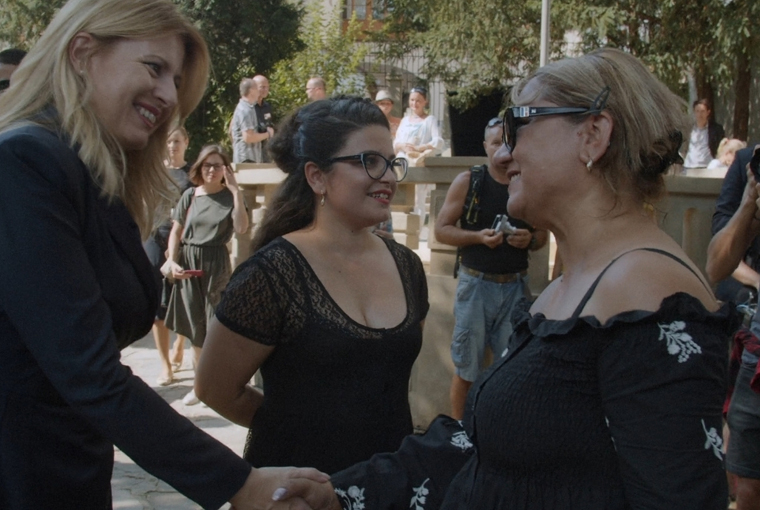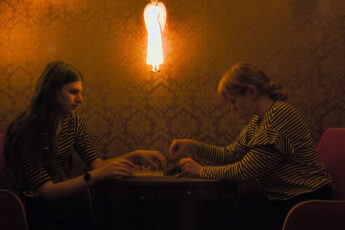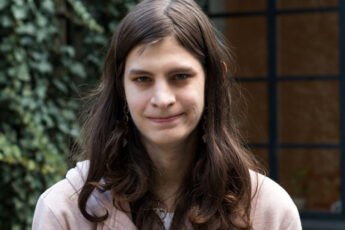Web of Lies
Vera Lacková’s How I Became a Partisan (Ako som sa stala partizánkou, 2021)
Vol. 132 (February 2023) by Alice Heneghan
When a memory is created in the human brain, neural pathways are formed that, although they get stronger each time the memory is revisited, fade away if they fall out of use. What survives in our internal storage becomes a system of reference, a web of information gathered through direct and indirect experience, tidied into narratives that help us to make sense of what has happened as well as guide us in the present. This phenomenon is crucial to how we interact with the world and is not limited to individuals. Books, poems, articles, jokes, songs, plays, legends, museums, school curriculums, memes and so many other cultural products, are like neural pathways that connect us to each other and form our collective memory. Every time we publish or consume, we strengthen those connections and subsequently, social narratives. Each time that we edit or ignore, we influence our view of the world. These ideas are not explicit themes of How I Became a Partisan, but when Vera Lacková decided to pick up her camera and investigate the story of her Roma grandfather Ján Lacko, whose family was slaughtered in the forest and left to rot, she revived a story that had been omitted from the collective memory of Slovakia and its national history. Consequently, Lacková has raised questions about Romani representation, cultural stereotypes, and the effect they have had on the lives of the individuals they involve.
The film is cracked open with the cranking of archival shelves so that Lacková can begin digging for material and uncover her story. This triggers a burst of frames that flash images of feathers on a forest floor, historical documents, black and white footage, and family heirlooms that evoke the scattered memories and source material she has to make sense of. It is as if she has unlatched a clasp on a box whose contents have been hastily shoved inside, unsorted and unprocessed but full of life and information. Despite extensive research and commemoration for the Jewish targets of the Holocaust, Roma and Sinti communities are part of an ongoing effort to have the genocide of their ancestors recognized. Museums, exhibitions, and history books do little to confirm the murder of an estimated 500,000 people and so this poetically chaotic presentation of the available source material, is in fact quite a realistic one. Nevertheless, this drives rather than intimidates Lacková, whose gentle yet stealthy demeanor sets the tone of a film that is more interested in doing the work than pointing fingers. During a runtime of 89 minutes, Lacková travels around Central Europe collecting interviews, finds proof of her grandfather’s and other Roma partisans’ fight against the Nazis, convinces a small town to put names onto a Roma mass grave, and sets up an exhibition that preserves all of her findings in the public eye. It is really quite admirable and begs the question of why one young woman has to take all of this on when it should be the responsibility of the whole of Europe. We like to think that we understand the gravity of WWII and have learned from it, yet the current climate of growing right-wing extremism and the selective recognition of which groups suffered from systemic mass extermination, suggest that we have quite some way to go.
An unfortunately perfect example of this can be found within How I Became a Partisan, when the film turns its attention to a pig farm in modern Czech Republic. In Lety u Písku, a labor camp was built in 1940 for so-called unproductive members of society. By 1942, the year that 15 Nazi officials met at Berlin’s Lake Wannsee to discuss the “Final Solution”, the camp’s population was predominantly Romani/Sinti and at twice the capacity it was built for. Needless to say, many men, women and children lost their lives there, while countless others were moved to Auschwitz in 1943. Yet, only three decades later, a pig farm was built on the land and in 2021, some of the locals that Lacková speaks with there aggressively deny the building’s real history. Some blame the many deaths on the site on poor hygiene, others insist the camp was one of general labor and one man in particular blames “fucking gy***s” for the closure of the pig farm in 2018. His venom is palpable through the screen and his attitude towards Roma communities is all too common in our culture. It is thanks to, not the fault of, tenacious Roma activists that the Czech government purchased the land in 2017 and facilitated the commemoration of the people who died on this site less than one hundred years ago. Denial of prejudice and racist misinformation is the perfect way to ensure its survival and according to the National Center for Biotechnology Information, a recent consequence of anti-Roma sentiment has been militarized measures disproportionately aimed at Romani communities in Central and Eastern Europe throughout the Covid-19 pandemic. Violent words such as those spat out by the man in Lety u Písku so easily become violent actions.
It may have been awkward for Lacková to visit Lety u Písku, but she barely bats an eyelid at what is said to her there; she has most likely developed thick skin to get to where she is and knows the footage will speak for itself. What is more difficult, for both her and the audience, is a scene at a friend’s house where casual chatter in the garden quickly turns ugly. Here, as well as during a couple of other moments in the film, the editing fails to contextualize and clarify what is being presented. It seems like the filmmaker is wary of manipulating her material, but a little intervention could have greatly benefited international audiences in understanding its nuances. It is not clear what was said to provoke the change in conversation but one member of the group suddenly comments on a nearby Roma settlement and how its inhabitants crowd the local post office on welfare day. This sparks a rant about how the right-wing politician Marian Kotleba, who is known for anti-Roma rhetoric and has been convicted for neo-Nazi sympathies, simply wants to unite Slovakia and how everybody has to struggle and undergo hardship. Nothing overt is said, but these vague comments imply that lower-class white Slovakians have it as tough as a marginalized group that constantly undergoes discrimination throughout the whole world. Nobody questions the possible socio-economic reasons why the Roma settlement is isolated and depends on welfare, but someone reassures Lacková that they would never say such things about her, as if she is a magical exception to the caricatured rules. It is understandable that this may be painful for the director to unpack and explore, as the film is set up to empower rather than victimize Roma communities, however it could have been poignant to connect such everyday ignorance and the ease at which it is expressed, to the larger theme of Roma and Sinti stories being omitted from history and culture.
Nevertheless, the scale of what Vera Lacková achieves in her documentary is significant. Through sharing her personal life and story, documenting underlying discrimination and highlighting Roma activists of the past and present, she contests harmful narratives and seeks to inspire her community by both uncovering and creating positive ones. She is vulnerable, graceful, determined and empowered despite the tragedies that have haunted her family. She refuses to suffer and insists on fighting back. While some examples of this have been revealed in this review, How I Became a Partisan has a lot more to offer its viewers. Hopefully those who do get the chance to see this documentary will be driven to question their own perspectives and help take the burden of implementing change off the shoulders of those who have already been made to pay the price for the severe lack of it.



Leave a Comment